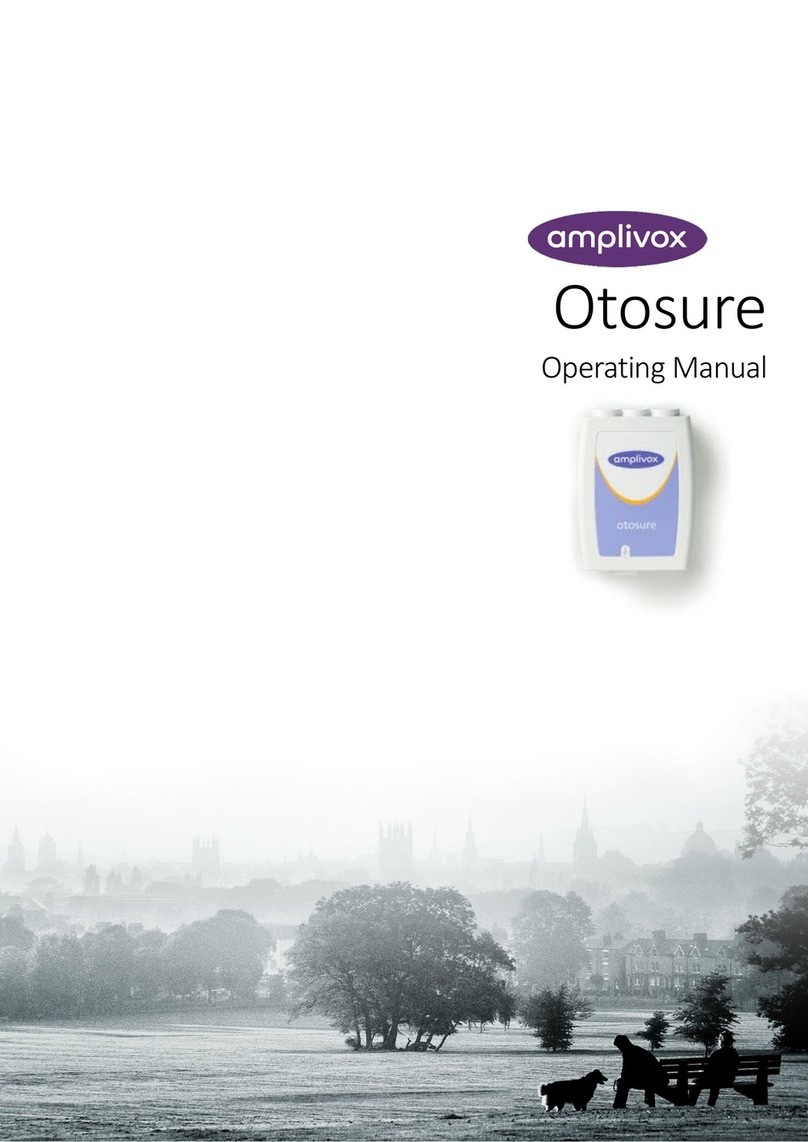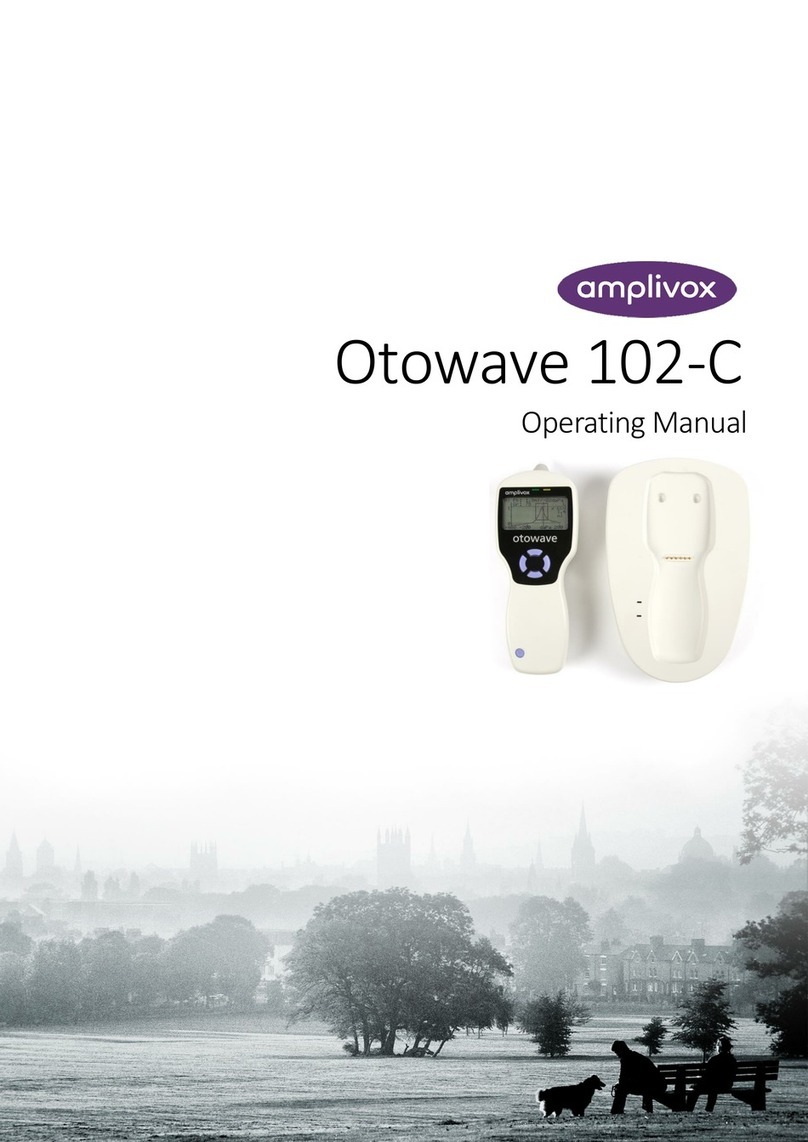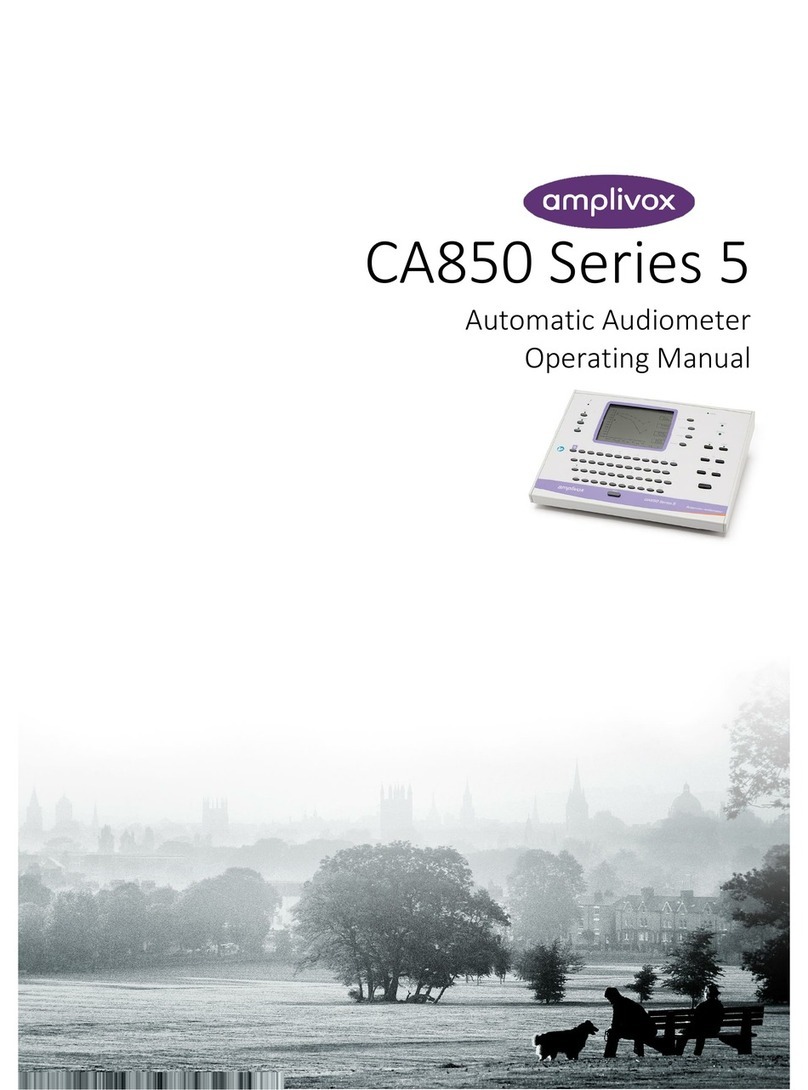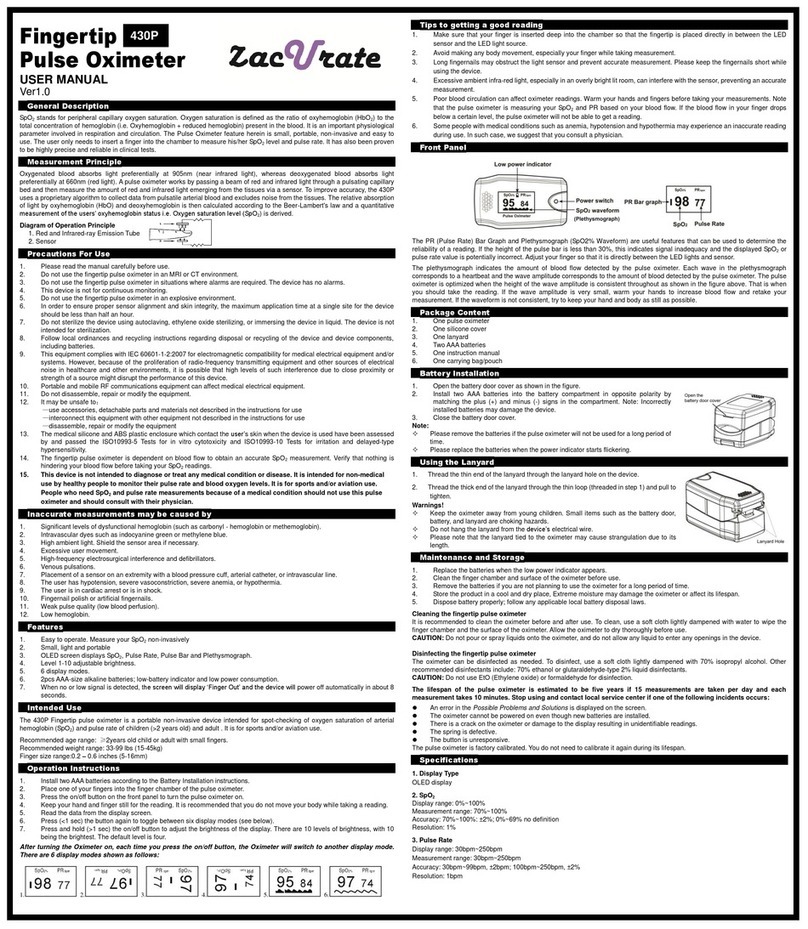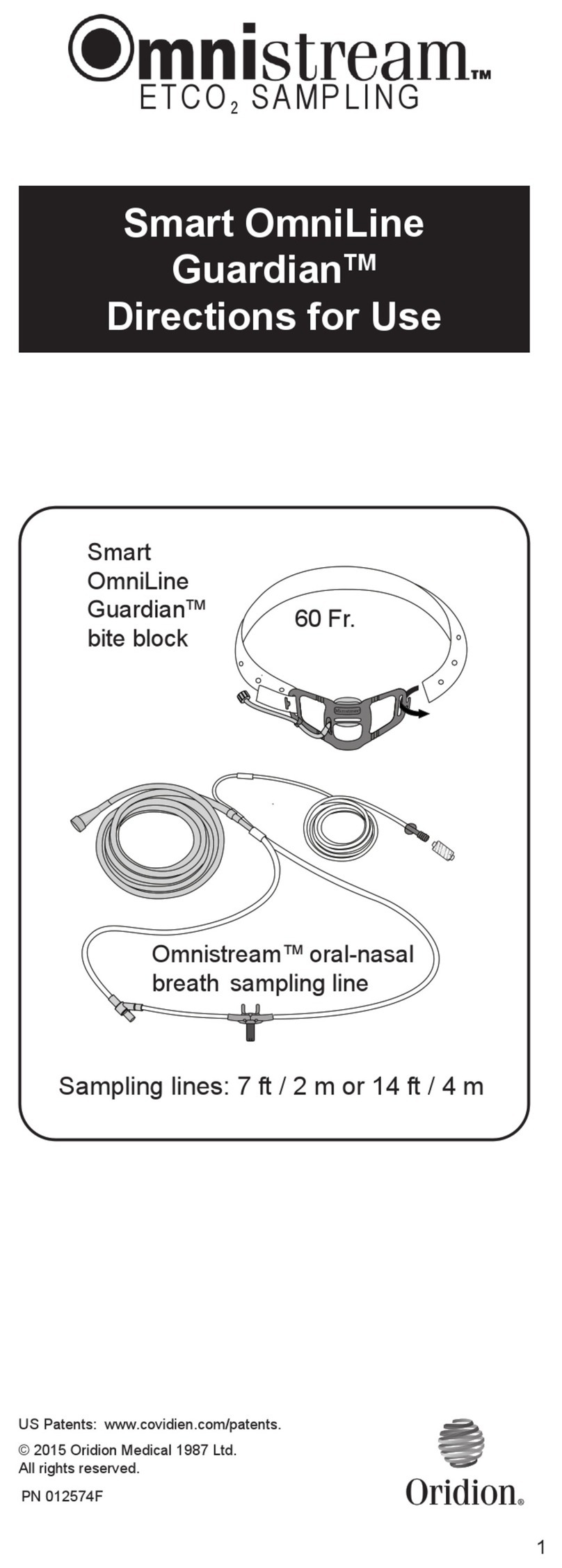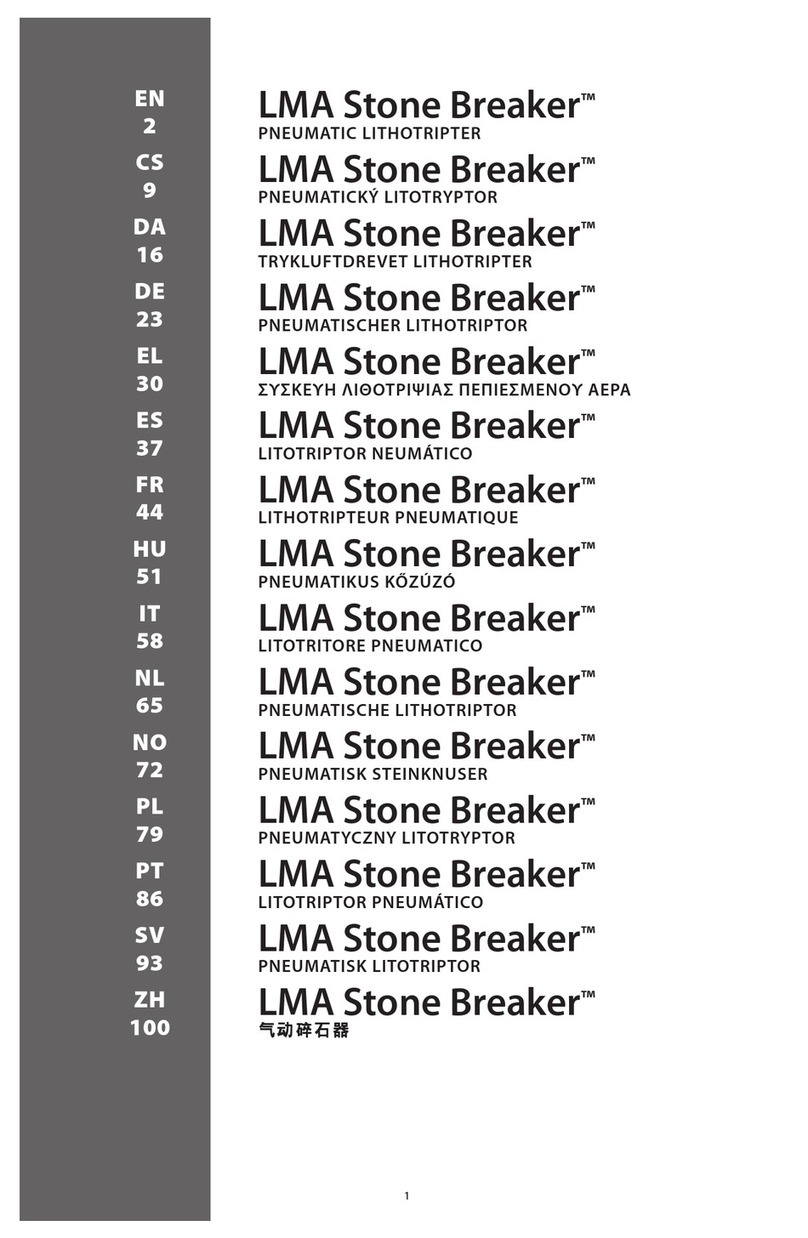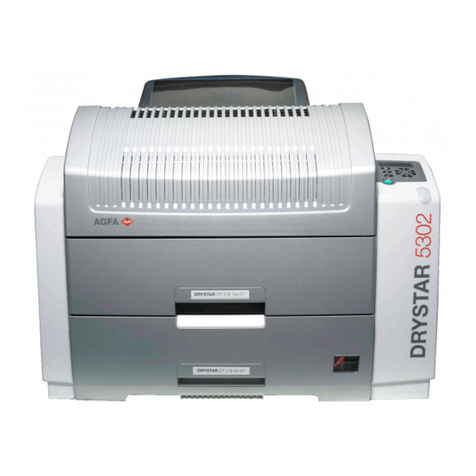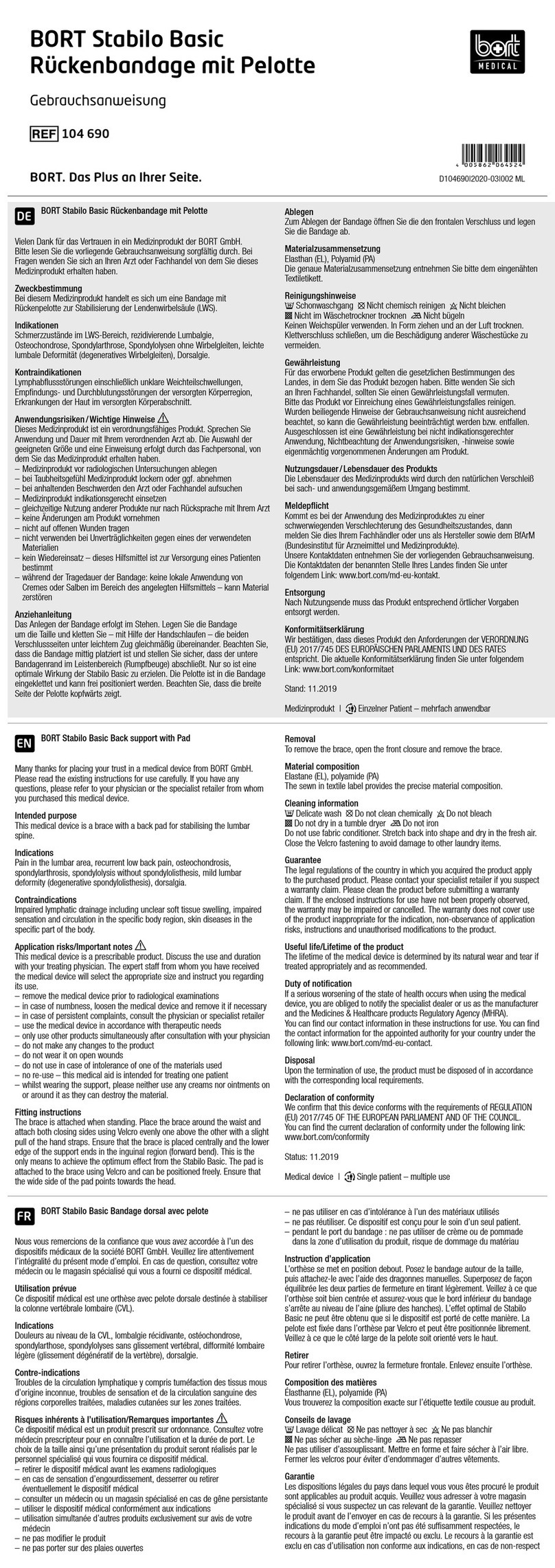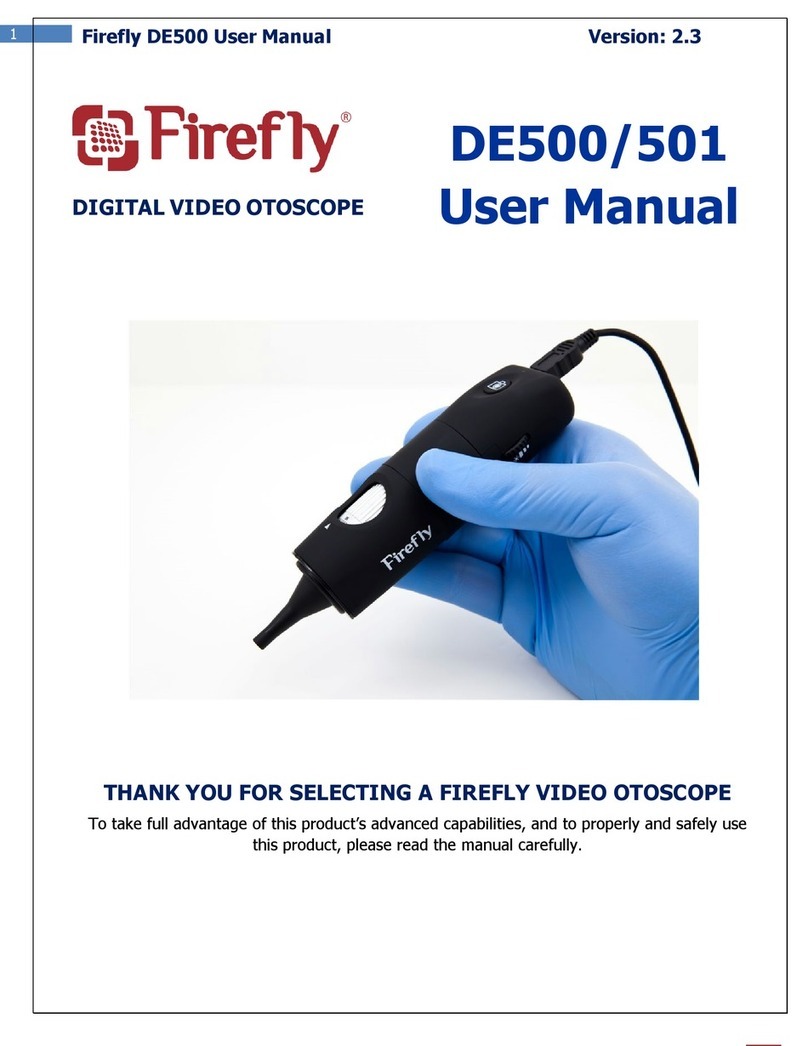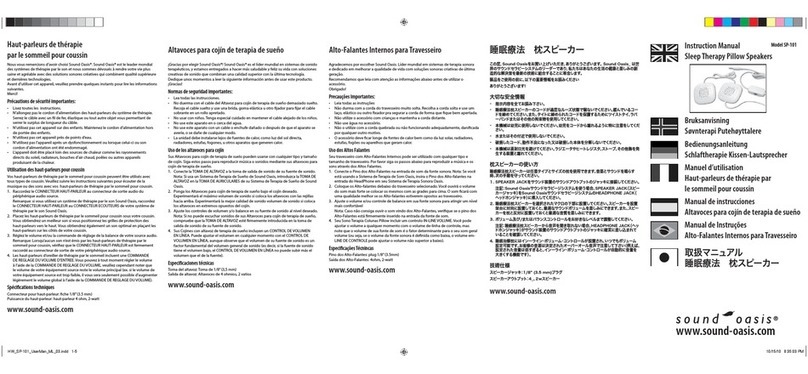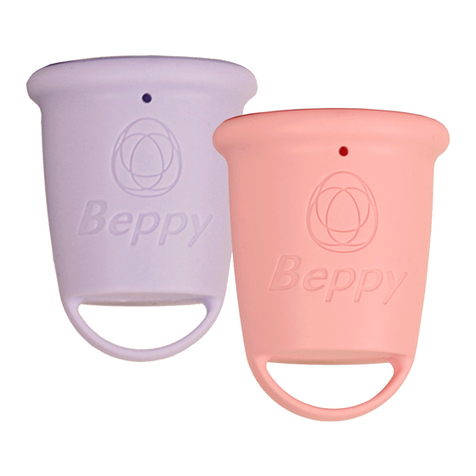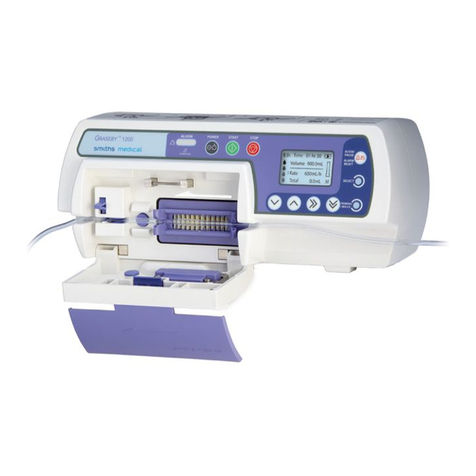AmpliVox Otowave 302+ User manual

D-0126546-C
INSTRUCTION FOR USE

ABOUT THIS MANUAL
1 OTOWAVE 302+ INSTRUCTION FOR USE
ABOUT THIS MANUAL
READ THIS OPERATING MANUAL BEFORE ATTEMPTING TO USE THE INSTRUMENT.
This manual is valid for the Otowave 302+ (applies from firmware version 1.0.0.085410 onwards –see System
Information screen).
This product is manufactured by:
Amplivox Ltd
3800 Parkside, Solihull Parkway,
Birmingham Business Park, Birmingham,
West Midlands,
B37 7YG
www.amplivox.com
For all enquiries please contact us under:
Amplivox Ltd
10393 West 70th Street
Eden Prairie
MN 55344
United States
Tel: 888 941 4208
Fax: 952 903 4100
Amplivox Ltd
3800 Parkside, Solihull Parkway,
Birmingham Business Park, Birmingham,
West Midlands,
B37 7YG
United Kingdom
Tel: +44 (0)1865 880846

TABLE OF CONTENTS
2 OTOWAVE 302+ INSTRUCTION FOR USE
TABLE OF CONTENTS
ABOUT THIS MANUAL 1
TABLE OF CONTENTS 2
1. INTRODUCTION 5
1.1. THANK YOU 5
1.2. INTENDED APPLICATIONS 5
1.3. CONTRAINDICATIONS 5
1.4. STANDARD AND OPTIONAL ACCESSORIES 6
1.5. GUARANTEE 7
1.6. WARNINGS 7
2. UNPACKING AND INSTALLATION 8
2.1. GENERAL 8
2.2. MARKINGS 8
2.3. SAFETY INSTRUCTIONS 9
2.3.1. General 9
2.3.2. Cautions –General 9
2.3.3. Environmental factors 10
2.3.4. Electrical and electrostatic safety 11
2.3.5. Electromagnetic compatibility (EMC) 11
2.3.6. Explosion hazards 11
2.3.7. Measuring accuracy 11
2.3.8. Miscellaneous 12
2.3.9. Use of equipment after transport and storage 12
2.4. CONNECTIONS 13
2.5. CONTROLS AND INDICATORS (BASE UNIT) 14
2.6. THE PROBE 15
2.6.1. Controls and Indicators (Probe) 15
2.6.2. The Probe Head 15
2.7. LIGHT INDICATORS 16
2.8. CONTRALATERAL TRANSDUCER 16
2.9. CHOOSING THE CORRECT EAR TIP SIZE 16
2.10. HARDWARE INSTALLATION 17
2.11. INITIAL SETTINGS 17
2.11.1. Operating language 17
2.11.2. Date and time 18
2.12. THE MPT-II PRINTER 18
2.12.1. Installing the mpt-II printer 18
2.12.2. switching the printer on and off 18
2.12.3. Using the printer 18
3. PRINCIPLES OF OPERATION 19
3.1. OTOSCOPIC EXAMINATION 19
3.2. PRINCIPALS OF ADMITTANCE MEASUREMENT 19
3.3. TYMPANOGRAM 19
3.4. ACOUSTIC REFLEX MEASUREMENT 20
4. USING THE OTOWAVE 302+ 21

TABLE OF CONTENTS
3 OTOWAVE 302+ INSTRUCTION FOR USE
4.1. GENERAL PRECAUTIONS 21
4.2. SWITCHING THE INSTRUMENT ON AND OFF 22
4.3. MENU DISPLAYS 22
4.4. PROFILE STRUCTURE 22
4.4.1. General 22
4.4.2. Changing Profiles 23
4.4.3. Copy Profile Settings from one to another 23
4.4.4. REset Profile Settings to Factory Default 24
4.4.5. Display Mode 25
4.5. TEST SETTINGS 26
4.5.1. General 26
4.5.2. Sweep Settings 27
4.5.3. Reflex Settings 28
4.6. SYSTEM SETTINGS 29
4.7. (DAILY)CHECK 30
4.8. SYSTEM INFORMATION 30
4.9. PERFORMING A TEST 31
4.9.1. Selecting the ear side 31
4.9.2. Performing tympanometry 31
4.9.3. Understanding the tympanometry test result 33
4.9.4. Performing tympanometry and acoustic reflex testing 34
4.9.5. Understanding the acoustic reflex test result 35
4.10. PROCESS RESULTS 37
4.10.1. General 37
4.10.2. Sending Results to a Printer 37
4.10.3. Saving Results to the Internal Database 37
4.11. (RE)VIEW THE LAST TEST(S) 39
4.12. DATABASE 40
4.12.1. General 40
4.12.2. List records (View, Print, Delete) 40
4.12.3. Delete Records 41
4.12.4. Print Records 42
4.12.5. Data Transfer to noah or AMPLISUITE 42
4.12.6. Database Full 42
5. TROUBLESHOOTING 43
6. ROUTINE MAINTENANCE 45
6.1. GENERAL MAINTENANCE PROCEDURES 45
6.2. CLEANING THE OTOWAVE 302+ 46
6.3. CLEANING THE PROBE 46
6.4. DISPOSABLES 46
6.5. ACCESSORIES/REPLACEMENT PARTS 47
6.6. REPAIR 47
6.7. WARRANTY 47
6.8. CALIBRATION AND RETURN OF THE INSTRUMENT 48
7. TECHNICAL SPECIFICATIONS 49
7.1. STANDARD AND REGULATORY 49
7.2. GENERAL 49
7.3. TYMPANOMETRY 50

4 OTOWAVE 302+ INSTRUCTION FOR USE
7.4. ACOUSTIC REFLEX TESTING 50
8. EMC GUIDANCE & MANUFACTURER’S DECLARATION 52
9. SAFETY PRECAUTIONS TO TAKE WHEN CONNECTING OTOWAVE 302+ 57
10. APPENDIX A –1000 HZ TYPANOMETRY & MEATUS COMPENSATION 58
10.1. TYMPANOMETRIC PROPERTIES 58
10.2. TYMPANOMETRIC MEASUREMENTS 58
10.3. SCALAR VS.VECTOR BASELINE 60
10.4. REFERENCE POINT FOR BASELINE VALUE 61
11. APPENDIX B –BASELINE MODE 62
11.1. GENERAL 62
11.2. 226 HZ TYMPANOMETRY –Y COMPENSATION ONLY 62
11.3. 1000 HZ TYMPANOMETRY 63
11.3.1. scalar Mode –y-compensation 63
11.3.2. Vector Mode –b-g-compensation 63
11.3.3. Component Mode –YBG 63

INTRODUCTION
5 OTOWAVE 302+ INSTRUCTION FOR USE
1.INTRODUCTION
1.1. THANK YOU
Thank you for purchasing an Amplivox Otowave 302+, a desktop-controlled impedance meter that will give many years
of reliable service if treated with care.
1.2. INTENDED APPLICATIONS
This instrument is designed for use by trained personnel only, such as audiologists, ENT surgeons, doctors, general
practitioners, hearing aid dispensers, child health professionals and hearing healthcare professionals with a similar level
of education. It is not recommended to use the equipment without the necessary knowledge and training.
The Otowave 302+ is to be used to obtain information on medical and functional conditions of the middle and outer ear
as well as to assess hearing functions throughout acoustic reflex testing. The Otowave 302+ can be used on all ages and
performs two types of measurement:
•Tympanometry: To measure the compliance of the tympanic membrane and middle ear at 226 Hz or 1000 Hz
over a range of pressures.
•Acoustic Reflex Testing: The Otowave 302+ measures both ipsilateral and contralateral acoustical reflexes. The
tests are performed either at ambient or peak pressure, based on the outcome of the tympanometry.
1.3. CONTRAINDICATIONS
Always visually inspect the outer ear and the external auditory canal for abnormalities before testing. Testing should
not be performed on patients if the following items are applicable.
•Acute external auditory canal trauma
•Discomfort (e.g. severe otitis externa)
•Occlusion of the external auditory canal
•Discharging ear
•Recent stapedectomy or middle ear surgery
•Presence of tinnitus, hyperacusis or other sensitivity to loud sounds may contraindicate testing when high
intensity stimuli are used

INTRODUCTION
6 OTOWAVE 302+ INSTRUCTION FOR USE
1.4. STANDARD AND OPTIONAL ACCESSORIES
Shipping documentation will reference the stock number quoted above, and images of the parts alongside the relevant
stock number are available on the Amplivox website (www.amplivox.com). The required fitting instructions are supplied
with each part.
STANDARD ACCESSORIES
Otowave 302+ Tympanometer base unit
8519028
Contralateral reflex transducer (probe tip
& earpiece lead)
85021771
Power Supply - FW7660M/05
8512734
Set of disposable ear-tips
80293441
USB with Software (ampliSuite and Noah
impedance module) and Operating
Manuals
8517685
4 in 1 cavity assembly
(0.2 ml/0.5 ml/2.0 ml/5.0 ml)
8011362
Cable USB a to USB B (1.8 m)
8011241
Carrying case
8507857
Calibration certificate
8011512
OPTIONAL ACCESSORIES
Sanibel MPT-II Thermal Printer
(standard in US conf.)
8503007
Thermal Printer paper for Sanibel
MPT-II (standard in US conf.)
8029305
Printer cable –Otowave to Sanibel MPT-
II (standard in US conf.)
8004419
Earpiece lead for contralateral reflex
transducer
8004447
Probe tip for contralateral reflex
transducer
80011181
Probe tip
80025921
Additional sets of ear tips
Seal (in probe tip)
80020091
Otowave probe assembly
85020051
ACCESSORIES TO REORDER
Ear tip Otowave 3-5mm, 25 pieces
8012963
Ear tip Otowave 4-7mm, 25 pieces
8012965
Ear tip Otowave 7mm, 25 pieces
8013001
Ear tip Otowave 8mm, 25 pieces
8013003
Ear tip Otowave 9mm, 25 pieces
8012969
Ear tip Otowave 10mm, 25 pieces
8012971
Ear tip Otowave 11mm, 25 pieces
8012973
Ear tip Otowave 12mm, 25 pieces
8012975
Ear tip Otowave 13mm, 25 pieces
8012977
Ear tip Otowave 14mm, 25 pieces
8012979
Ear tip Otowave 15mm, 25 pieces
8012981
Ear tip Otowave 19mm, 25 pieces
8012983
1
Applied part as according to IEC 60601-1

INTRODUCTION
7 OTOWAVE 302+ INSTRUCTION FOR USE
1.5.GUARANTEE
All Amplivox instruments are guaranteed against faulty materials and manufacture. The instrument will be repaired
free of charge for a period of three years from the date of dispatch if returned, carriage paid, to the Amplivox service
department. Return carriage is free of charge for customers in the UK and chargeable for overseas customers.
The following exceptions apply:
•The pressure pump and transducers may go out of calibration due to rough
handling or impact (dropping)
•The lifetime of probe, probe seals and ear tips is dependent upon conditions of
use. These parts are only guaranteed against faulty materials or manufacture.
1.6. WARNINGS
Throughout this manual, the following meanings of warnings and cautions apply:
The WARNING label identifies conditions or practices that may present danger to the
patient and/or user.
The CAUTION label identifies conditions or practices that could result in damage to the
equipment.
WARNING
WARNING
CAUTION

UNPACKING AND INSTALLATION
8 OTOWAVE 302+ INSTRUCTION FOR USE
2.UNPACKING AND INSTALLATION
2.1. GENERAL
Please check the contents of the shipping carton against the delivery note to make sure that all items ordered have
been included. If anything is missing, please contact the distributor who supplied the tympanometer or Amplivox if
purchased directly.
Please retain the carton and packaging as the instrument will need calibrating on an annual basis and should be returned
to Amplivox in its original shipping carton.
For supply in US only: Federal Law restricts this device to sale by or on the order of a licensed medical professional.
2.2. MARKINGS
The following markings can be found:
Symbol
Explanation
Type B applied parts. According to IEC 60601-1.
Patient applied parts that are not conductive and can be immediately released from the
patient.
Refer to instruction manual.
WEEE (EU-directive)
This symbol indicates that when the end-user wishes to discard this product, it must be sent to
separate collection facilities for recovery and recycling. Failing to do so may endanger the
environment.
0123
The CE-mark indicates that Amplivox Ltd. meets the requirements of Annex II of the Medical
Device Regulation 2017/745. TÜV Product Service, Identification No. 0123, has approved the
quality system.
Serial number.
Date of manufacture.
The output from the mains AC adapter is Direct Current.
Do not re-use.
Ear-tips are for single use only.
CAUTION

UNPACKING AND INSTALLATION
9 OTOWAVE 302+ INSTRUCTION FOR USE
Keep dry.
Transport and storage humidity range.
Transport and storage temperature range.
Medical device.
Logo.
Turns the instrument on or off. Long press to turn off. Short press to wake the device from
sleep mode (display off).
2.3. SAFETY INSTRUCTIONS
2.3.1. GENERAL
The following safety precautions must be observed at all times. General safety precautions must be followed when
operating electrical equipment. Failure to observe these precautions could result in damage to the equipment and injury
to the operator or patient.
The employer should instruct each employee in the recognition and avoidance of unsafe conditions and the regulations
applicable to his or her work environment to control or eliminate any hazards or other exposure to illness or injury.
Amplivox Ltd. is aware that safety rules within individual organisations vary. If a conflict exists between the instructions
in this manual and the rules of the organisation using this instrument, the more stringent rules should take precedence.
The Otowave 302+ is intended to be used by hearing healthcare professionals (i.e. ENT doctors, audiologists), nurses or
technicians who have been trained in the proper use of the device.
2.3.2. CAUTIONS –GENERAL
If the system is not functioning properly, do not operate it until all necessary repairs are made and the unit is tested and
calibrated for proper functioning in accordance with Amplivox’s specifications.
Do not drop or in any other way cause undue impact to this device. If the instrument is damaged, return it to the
manufacturer for repair and/or calibration. Do not use the instrument if any damage is suspected.
CAUTION

UNPACKING AND INSTALLATION
10 OTOWAVE 302+ INSTRUCTION FOR USE
This product and its accessories will perform reliably only when operated and maintained in accordance with the
instructions contained in this manual, accompanying labels, and/or inserts. A defective product should not be used.
Make sure all connections to external accessories are secured properly. Parts which may be broken or missing or are
visibly worn, distorted, or contaminated should be replaced immediately with clean, genuine replacement parts
manufactured by or available from Amplivox Ltd.
Equipment is not user repairable. Repairs must be performed by an authorised service representative only. No
modifications of the equipment are allowed by anyone other than a qualified Amplivox Ltd. representative. Modification
of the equipment could be hazardous.
Amplivox Ltd. will make available on request component part lists, descriptions, calibrations instructions, or other
information that will assist authorised service personnel to repair those parts of this instrument that are designated by
Amplivox Ltd. as repairable by service personnel.
No parts of the equipment can be serviced or maintained while in use with the patient.
Connect only accessories purchased from Amplivox Ltd. to the Otowave 302+. Only accessories which have been stated
by Amplivox Ltd. to be compatible are allowed to be connected to the device.
To comply with the standards IEC 60601-1 for safety and IEC 60601-1-2 for electromagnetic compatibility (EMC) the
tympanometer is designed to be used only with the medically-approved mains adapter supplied, which is specified as
part of the equipment. Do not use any other type of mains adapter with this instrument.
The output from the mains adapter is fitted with electronic circuit protection. In case of overload the adapter will shut
down. When the fault is cleared the adapter will operate as normal. However, the input to the mains adapter is
protected with a non-replaceable fuse. If this fails the adapter will not operate
The mains adapter is the mains disconnect device and therefore the tympanometer should be positioned such that easy
access to the mains adapter is possible.
2.3.3. ENVIRONMENTAL FACTORS
Use and store the instrument indoors only. It is recommended that the instrument be
operated within an ambient temperature range of 15 °C / 59 °F to 35 °C / 95 °F and in
relative humidity between 30 % and 90 % (non-condensing).
Do not use the device in the presence of fluid that can come into contact with any of the electronic components or
wiring. Should the user suspect fluids have contacted the system components or accessories, the unit should not be
used until deemed safe by an authorised service technician.
As with all instruments of this nature the measurements taken will be influenced by significant changes in altitude &
pressure. The Otowave 302+ tympanometer must be re-calibrated if it is to be used at elevations greater than 1000m
above mean sea level. This applies to volume measurements up to 2.0ml maximum. Please refer to the service manual
for more information.
CAUTION

UNPACKING AND INSTALLATION
11 OTOWAVE 302+ INSTRUCTION FOR USE
2.3.4. ELECTRICAL AND ELECTROSTATIC SAFETY
Before performing any service to the contra earphone or probe, you must remove them
from the patient.
Do not touch the contacts on the back of the instrument and the patient at the same
time. The consequence could be a leakage current to the patient.
Do not open the case of the instrument. Refer servicing to qualified personnel.
This equipment is intended to be connected to other equipment thus forming a Medical Electrical System. External
equipment intended for connection to signal input, signal output or other connectors must comply with the relevant
product standard e.g. IEC 60950-1 for IT equipment and the IEC 60601-series for medical electrical equipment. In
addition, all such combinations –Medical Electrical Systems –must comply with the safety requirements stated in the
general standard IEC 60601-1, (edition 3.1), clause 16. Any equipment not complying with the leakage current
requirements in IEC 60601-1 must be kept outside the patient environment i.e. at least 1.5m from the patient support
or must be supplied via a separation transformer to reduce the leakage currents. Any person who connects external
equipment to signal input, signal output or other connectors has formed a Medical Electrical System and is therefore
responsible for the system to comply with these requirements. If in doubt, contact a qualified medical technician or
your local representative. When the instrument is connected to a PC, or other similar items, beware of not touching the
PC and patient simultaneously.
A Separation Device (isolation device) is needed to isolate the equipment located outside the patient environment from
the equipment located inside the patient environment. In particular a Separation Device is required when a network
connection is made. The requirement for the Separation Device is defined in IEC 60601-1 clause 16.
Do not use any additional multiple socket-outlet or extension cord. Use only the Amplivox Mains Power Adaptor.
2.3.5. ELECTROMAGNETIC COMPATIBILITY (EMC)
Although the instrument fulfills the relevant EMC requirements, precautions should be
taken to avoid unnecessary exposure to electromagnetic fields, e.g., from mobile
phones, etc. If the device is used adjacent to other equipment it must be observed that
no mutual disturbance appears. Please also refer to the appendix regarding EMC.
2.3.6. EXPLOSION HAZARDS
Risk of explosion.
Do not use in the presence of flammable anesthetics or other gases.
Do NOT use in the presence of flammable gaseous mixtures. Users should consider the
possibility of explosions or fire when using this device in close proximity to flammable
anesthetic gases.
Do NOT use the Otowave 302+ in a highly oxygen-enriched environment, such as a
hyperbaric chamber, oxygen tent, etc.
2.3.7. MEASURING ACCURACY
CAUTION
WARNING
CAUTION
WARNING

UNPACKING AND INSTALLATION
12 OTOWAVE 302+ INSTRUCTION FOR USE
To guarantee that the Otowave 302+ works properly, the instrument should be checked and calibrated at least once a
year. The transducers supplied with the tympanometer are specifically calibrated with it; if these transducers are
changed recalibration will be required.
The service and calibration must be performed by an authorised service technician. If these checks are not performed,
EU Medical Device Regulation (MDR) and other regulations may be violated, and warranties may be void.
The use of non-calibrated devices can lead to incorrect test results and is not advisable.
2.3.8. MISCELLANEOUS
Please note: DO NOT connect the Otowave 302+ hardware to the computer before the software has been installed.
Storage in temperatures below 0C /32F and above 50C /122F may cause permanent damage to the instrument and
its accessories.
Do not place the instrument next to a heat source of any kind.
Great care should be exercised when handling transducers, as rough handling, for example dropping onto a hard surface
may break or damage the parts.
Within the European Union it is illegal to dispose of electrical and electronic waste as unsorted
municipal waste. Electrical and electronic waste may contain hazardous substances and therefore
must be disposed of separately. Such products will be marked with the crossed-out wheelie-bin image
shown to the left. User cooperation is important in order to ensure a high level of reuse and recycling
of electrical and electronic waste. Failure to recycle such waste products in an appropriate way may
endanger the environment and consequently the health of human beings.
Outside the European Union, local regulations should be followed when disposing of the product after its end of life.
2.3.9. USE OF EQUIPMENT AFTER TRANSPORT AND STORAGE
Please make sure that the instrument is functioning correctly before use. If the instrument has been stored in a cold
environment (even for short period of time), please allow the instrument to become acclimatised. This can take long
time depending on the conditions (such as environmental humidity). You can reduce the condensation by storing the
instrument in its original packaging. If the instrument is stored under warmer conditions than the actual use conditions
no special precaution is required before use. Always ensure proper operation of the instrument by following routine
check procedures for audiometric equipment.

UNPACKING AND INSTALLATION
13 OTOWAVE 302+ INSTRUCTION FOR USE
2.4. CONNECTIONS
All connections are made to the rear panel of the tympanometer as shown below.
1
Probe holder
Holder to store probe while not in use
2
Contra phone
Contralateral transducer
3.5mm jack
3
Air channel
Connection of probe (pressure)
Push-fit connector
4
Probe
Connection of probe (electrical)
15-way D connector
5
Printer
Connection of external printer
RJ12 socket (6-way)
6
USB
Connection for computer (via USB port)
USB Connector, Type B
7
Power
Mains AC/DC Adapter
2.5mm power jack
Please note: Only connect the accessories supplied with the instrument or supplied by Amplivox or an Amplivox
distributor. These parts have been tested for use with the Amplivox Otowave 302+ tympanometer for compliance with
the standards IEC 60601-1 and IEC 60601-1-2. The use of accessories other than those specified may compromise
compliance with these standards.
2
3
1
4
5 6 7

UNPACKING AND INSTALLATION
14 OTOWAVE 302+ INSTRUCTION FOR USE
2.5. CONTROLS AND INDICATORS (BASE UNIT)
The Otowave 302+ consists of an LCD screen, buttons in groups to operate the instrument and three status LEDs.
a
Power indicator LED
Lights up as soon as the instrument is powered through the mains adapters (also
when the instrument is switched off).
b
Indicator LED
Illuminates depending on functionality of the instrument
c
Indicator LED
Illuminates depending on functionality of the instrument
1
On/Off switch
Short press to switch on the device, long press to switch it off.
2
Navigation keys
•Press the up ▲and down ▼navigation keys to scroll through the menus or set
values
•Press the right navigation key ►to accept a menu choice or go to the next step.
•Press the left navigation key ◄to cancel an operation or go back to the previous
step.
•The function of the left and right keys is usually shown on the bottom line of the
display.
3
Soft keys
Use the softkeys S1 to S6 to operate the instrument. Each key is associated with the
corresponding line in the display.
4
Display Mode
Quick view of the test settings currently used or change of baseline mode.
1
2
4
a
b c
3

UNPACKING AND INSTALLATION
15 OTOWAVE 302+ INSTRUCTION FOR USE
2.6. THE PROBE
2.6.1. CONTROLS AND INDICATORS (PROBE)
1
Indicator light
Illuminates depending on functionality of the instrument
2
Function button
Quick view of the test settings currently used or change of baseline mode.
3
Probe tip with ear tip
2.6.2. THE PROBE HEAD
1
Boss and Nut
Connection on probe body for attaching nose cone
2
Seal gasket
Gasket used to ensure air flow
3
Probe tip
Transparent probe tip which houses the gasket
4
Nose cone
Top part of probe to securely fasten probe tip and gasket
The small holes through the Otowave 302+ probe tip must be kept clear. If these become blocked a warning message
will be displayed. The probe tip must be removed and replaced.
To remove the probe tip, unscrew the nose cone and remove the probe tip from the boss. A small seal will be found in
the base of the probe tip. This should be examined and replaced if it is blocked or damaged. Do not remove the nut
securing the boss to the body of the instrument.
Please note: When replacing the probe tip, ensure that the seal is correctly located with the flat side aligned with
the flat side within the base of the probe tip. Push the probe tip over the boss and replace the nose cone. Make sure
that the nose cone is screwed home firmly but do not over-tighten. Do not use any tools to tighten the nose cone.
After replacing the tip, a ‘Daily Check’ should be carried out.
1 2 3
1 2 3 4

UNPACKING AND INSTALLATION
16 OTOWAVE 302+ INSTRUCTION FOR USE
2.7. LIGHT INDICATORS
The indicators on the Otowave 302+ and the probe show the status of the system.
STATUS
LED B
LED C
PROBE
Otowave 302+ turned off
Off
Off
Off
Idle, test completed or test cancelled
On
Off
Green on
Insert probe or remove probe (refer to display for details)
Flashing
(fast)
Flashing
(fast)
Colour alternating
(Green / Yellow)
Ensure probe is held steady while an ear seal is obtained
Off
Flashing
(slow)
Yellow flashing
(slow)
Testing - tympanogram and/or reflex measurement
Flashing
(slow)
Off
Green flashing
(slow)
2.8. CONTRALATERAL TRANSDUCER
1
Ear tip
Ear tip to be placed on probe tip of contra phone
2
Probe tip
Probe tip screwed onto contra phone
3
Plug
Connector to CONTRA socket on Otowave 302+
The contralateral transducer is used when it is required to provide a reflex stimulus to the opposite ear to that being
tested with the main probe assembly. For use it should be connected to the CONTRA socket on the base unit and fitted
with a new ear tip.
The contralateral probe tip may be replaced if necessary (e.g. if damaged). To remove the contralateral probe tip,
carefully unscrew it from the body of the transducer. Carefully fit the replacement part and make sure that it is screwed
home firmly but do not over-tighten. Do not use any tools to tighten the contralateral probe tip.
2.9. CHOOSING THE CORRECT EAR TIP SIZE
Amplivox YouTube video is available for assistance on how to choose the right ear tip.
The probe tip must be fitted with a new ear tip before it is presented to a patient’s ear canal. If a contralateral reflex
stimulus is to be applied, fit a new ear tip to the contralateral transducer before presenting it to the patient’s opposite
ear canal.
1 2 3

UNPACKING AND INSTALLATION
17 OTOWAVE 302+ INSTRUCTION FOR USE
Please note: The probe tip must be fitted with a new ear tip before it is presented to a patient’s ear canal. If a
contralateral reflex is to be applied, fit a new ear tip to the contralateral transducer before presenting it to the patient’s
opposite ear canal. The ear tip size is chosen to suit the patient’s ear and provide a comfortable pressure seal.
Please note: Never insert the probe or the contralateral transducer into a patient’s ear canal without a suitable
ear tip fitted.
The ear tip size is chosen based on the diameter of the external of
the ear canal and should suit the patient’s ear but also provide a
comfortable pressure seal.
Ensure that the ear tip is pushed all the way down on the probe
tip and that there is no gap between probe tip and ear tip.
The small holes through the Otowave 302+ probe tip must be kept
clear. If these become blocked a warning message will be
displayed. The probe tip must be removed and replaced.
2.10. HARDWARE INSTALLATION
The instrument is shipped with the probe attached to the Otowave 302+. The instrument is designed for continuous
operation and is powered by a mains adapter. Connect the output lead from the adapter into the POWER input socket
on the back of the Otowave 302+. When powered the Power indicator (LED a) on the Otowave 302+ will illuminate
green, showing that the instrument is ready for use.
If performing contralateral reflex testing, connect the transducer to the CONTRA socket (2) on the base unit of the
Otowave 302+.
2.11. INITIAL SETTINGS
2.11.1. OPERATING LANGUAGE
The instrument will be set in English by default. To change the operating language (English, German, French, Spanish,
Portuguese or Italian) ensure you start from the MAIN MENU.
PROFILES
Select S1 to access Profile
1.
MAIN MENU
Select down ▼1x.
Select S1 to access the SYSTEM.
Select down ▼1x.
Select S4.
LANGUAGE
Select S1 to S6 to select
another language.

UNPACKING AND INSTALLATION
18 OTOWAVE 302+ INSTRUCTION FOR USE
2.11.2. DATE AND TIME
The Otowave 302+ is equipped with a real-time clock. Before use, please set the date & time to local values in order to
ensure that test data and calibration status are correctly identified.
2.12. THE MPT-II PRINTER
2.12.1. INSTALLING THE MPT-II PRINTER
The Sanibel MPT-II thermal printer is available as an option for use with the Otowave 302+ and is connected using the
cable supplied. The printer may be specified when ordering and only this printer should be used. It will be correctly
configured for use. Upon receipt of the printer it must be initially charged for a minimum of 15 hours prior to use.
1. Open the lid by pushing on the sides, insert paper roll as shown, and
close the lid.
2. Insert the battery.
2.12.2. SWITCHING THE PRINTER ON AND OFF
Push POWER BUTTON for two seconds in order to power ON or OFF. One short beep
will be heard at power ON, two short beeps at power OFF.
The green power indicator will be lit if the printer is powered by battery.
2.12.3. USING THE PRINTER
Printer self-test:
While printer is powered OFF, press and hold PAPER FEED button, then press and hold
POWER BUTTON simultaneously. When beep is heard after approx. 3 seconds, release
both buttons, and a test page will print with information on current status and character
samples.
Paper feed:
When powered, press PAPER FEED button. Paper will feed as long as the button is
pressed.
Connecting process:
•Connect the printer via the cable with the device
•Power on printer
•Select print option in the Otowave 302+

PRINCIPLES OF OPERATION
19 OTOWAVE 302+ INSTRUCTION FOR USE
3.PRINCIPLES OF OPERATION
3.1. OTOSCOPIC EXAMINATION
A suitably-qualified health care professional should perform a thorough otoscopic examination to establish that the
condition of the ear is suitable for the test options selected and that no contraindications are present. The latter would
include obstruction of the external ear canal due to excessive wax and/or hairs, both of which would need to be
removed. This is required to ensure that the probe tone delivered by the probe is able to reach the ear drum and is not
reflected by cerumen or debris and thereby alter the test result.
3.2. PRINCIPALS OF ADMITTANCE MEASUREMENT
The Otowave 302+ measures the admittance of the tympanic membrane and middle ear by playing a continuous tone
into the ear canal at either 226 Hz or 1000 Hz. The level of this tone is calibrated to give 85 dB SPL (226 Hz) or 79 dB SPL
(1000 Hz) into a 2 ml cavity. The sound level this produces in the ear canal is measured using a microphone and the
admittance calculated from the result.
In line with normal audiometric practice admittance is displayed as an equivalent volume of air in ml (for 226 Hz) or
mmho/mƱ (for 1000 Hz). The residual ear canal volume between the probe and the tympanic membrane is always
displayed in ml; when using a 1000 Hz probe tone the measured value in mmho is converted to ml using a conversion
factor of 226/1000.
3.3. TYMPANOGRAM
Tympanometry is part of the objective impedance test battery and provides information about the middle ear mobility
and pressure in the middle ear system.
To record the tympanogram, the admittance is measured while the air pressure in
the ear canal is varied from +200 daPa to -400 daPa by means of a small pump. The
admittance peaks when the air pressure is the same on both sides of the tympanic
membrane. The change of admittance with pressure is displayed graphically.
Table of contents
Other AmpliVox Medical Equipment manuals
Popular Medical Equipment manuals by other brands
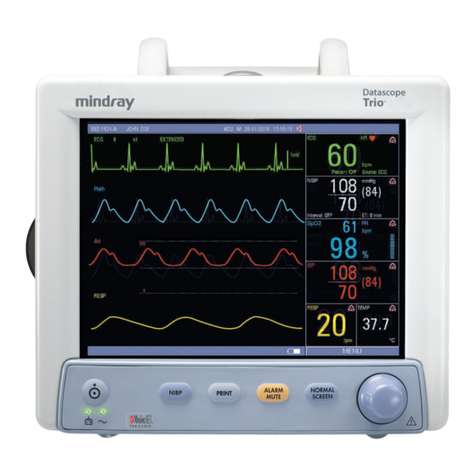
Mindray
Mindray Trio operating instructions
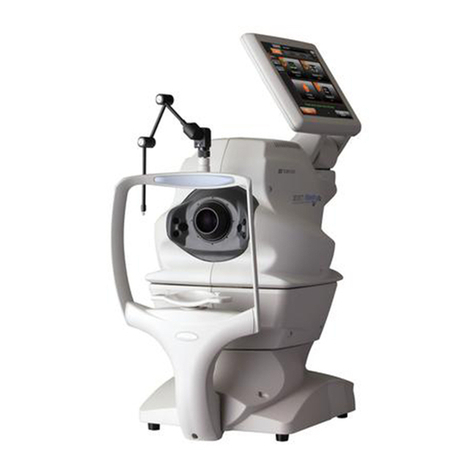
Topcon
Topcon 3D OCT-1 user manual
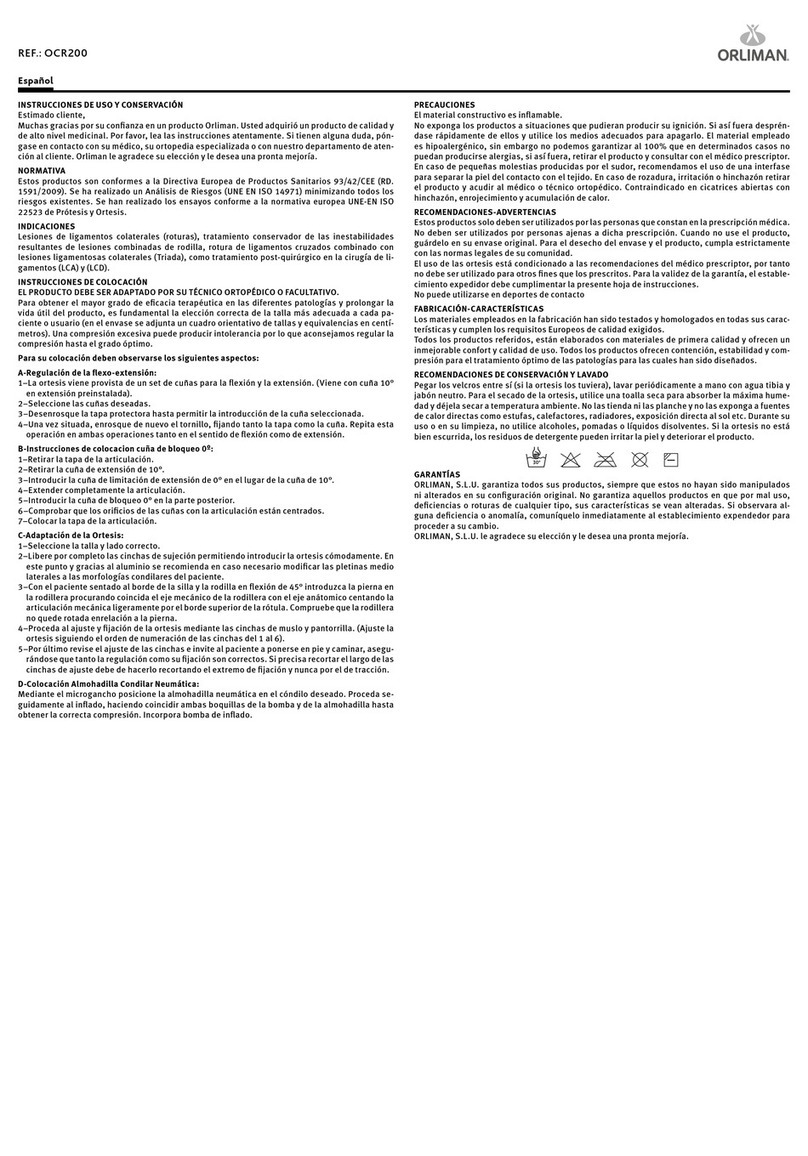
Orliman
Orliman OCR200 INSTRUCTIONS FOR USE AND PRESERVATION
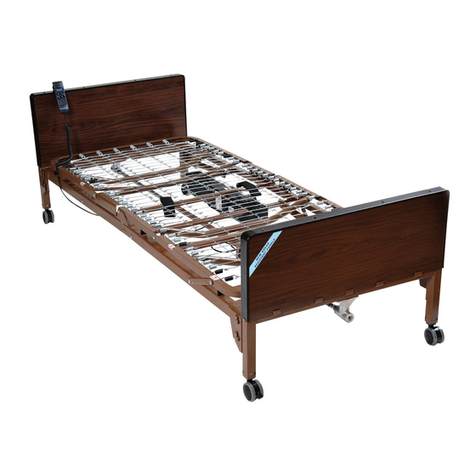
Drive
Drive Ultra Light Plus Owner's assembly and operating manual

Cardinal Health
Cardinal Health NPWT PRO Patient Quick Reference Guide
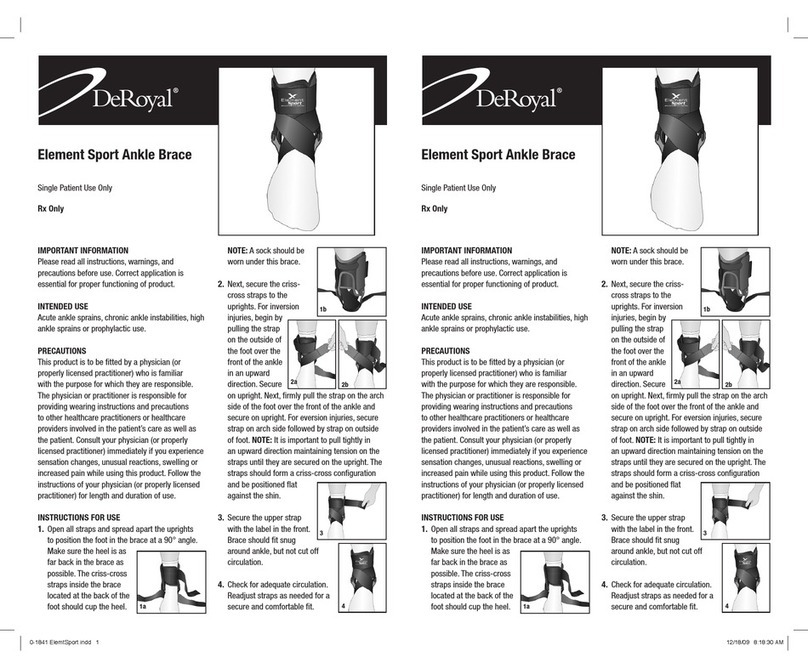
DeRoyal
DeRoyal Element Sport Instructions for use


